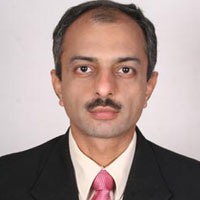 This Christmas morning, my nine-year-old son asked me if there really is a Santa Claus. I told him the truth. He retorted, “I knew it. Just wanted to hear from you.”
This Christmas morning, my nine-year-old son asked me if there really is a Santa Claus. I told him the truth. He retorted, “I knew it. Just wanted to hear from you.”
For many investors in India, last week was one such moment, when a video went viral. In this video, famous anchor Udayan Mukherjee admitted that nobody should listen to the short-term predictions (watch the video here). Many commented like my son – we always knew, just got to hear from the horse’s mouth.
And now comes another one from Adam Parker of Morgan Stanley, who wrote a note titled, “2016 US Equity Strategy Outlook: Feeling Worse, But Not Sure We Can Explain It”. In this note, Adam Parker puts something bluntly as part of the disclaimer, “we don't think anyone can forecast the price-to-forward earnings ratio for the S&P500 in time frames less than a few years”.
Adam Parker further writes, “We assign little value to this attempt other then just framing and dimensioning some of the key variables, and we are constantly amazed when people ask about the market multiple, given that all of our prior work has shown basically no empirical evidence to support forecasting claims. Why more people don't understand this is unclear to us. Many times those making the forecasts are simply unaware that they can't actually do it accurately, rely on spurious correlations, or don't bother to back-test their own theories.”
(Read more about this here).
Is this mere coincidence or a season of confessions that the forecasters, like Santa Claus, are just myths and do not exist in reality?
As I have mentioned in the chapter “On Forecasting” in my book “Riding the Roller Coaster – Lessons from financial market cycles we repeatedly forget”:
Humans have always wanted to know the future. Astrologers and weather forecasters are among the most popular ones who make a living out of this need. Someone who can see the future is called a ‘visionary’. This ‘need to know the future’ is present in the world of business and finance too. There are large numbers of analysts and forecasters, who make a living – in fact, many make a killing. However, the track record of such forecasts is not as impressive as one would like to see.
The fact is it is next to impossible to predict short-term future. However, we favor ‘certainty’ over ‘uncertainty’. This leads us to look for someone who can predict the future. We want to know the future in advance so that we can position our portfolios to take advantage of the opportunities or to avoid the risks. However, as we saw, the track record of the forecasters is poor.
So, now what, what do we do if we cannot forecast correctly? The answer is very clear: “If you cannot predict, protect.”
Insurance is understood as a protection product. When we do not know whether we will fall ill, when would that happen or how much money would be required for the treatment, we buy insurance. Approach investments in the same way: If you do not know the future and if you cannot get the predictions right, protect your portfolio.
There are certain ways to do this:
- Allocate your clients’ investments across different asset classes
- Diversify within the asset class
- Keep some money in highly liquid, low-volatility instruments to meet emergencies and short-term needs
- Insist on buying good quality assets/investments
Remember, we are not suggesting that you would be able to stop any of the future events from happening. However, it is quite possible to reduce the unfavorable impact of such events on the financial health of your clients.
Wish you all a very happy, healthy and wealthy 2016.
The author runs Karmayog Knowledge Academy. Recently, Amit has authored a book titled “Riding the Roller Coaster – Lessons from Financial Market Cycles We Repeatedly Forget”.
The views expressed in this article are solely of the author and do not necessarily reflect the views of Cafemutual.


